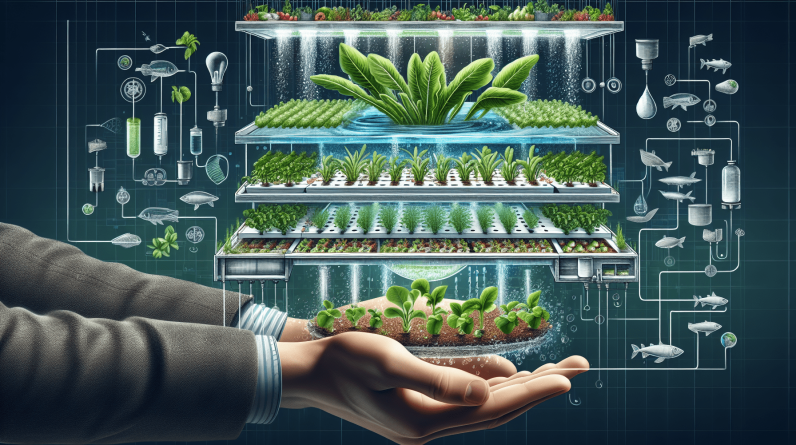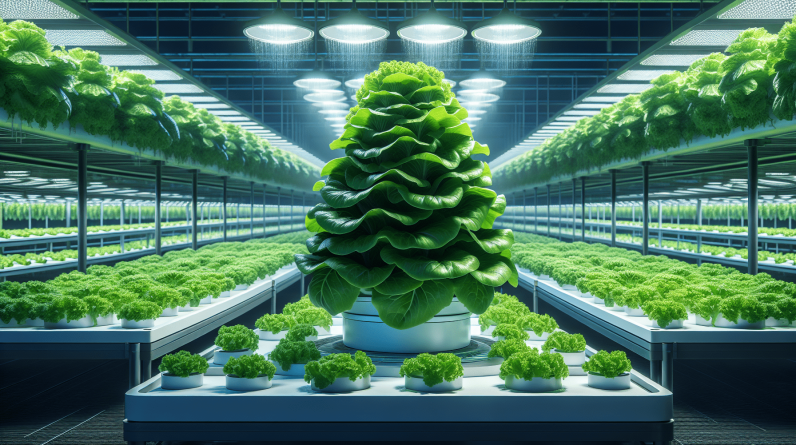
Have you ever thought about growing your vegetables year-round? In this guide, you will learn about hydroponic systems, a modern and efficient way to grow vegetables without soil. You’ll discover the benefits of hydroponic gardening, how to set up your own system, and tips for maintaining a successful year-round vegetable garden. Let’s dive into the world of hydroponic vegetable growing together!

This image is property of pixabay.com.
What is Hydroponic Gardening?
Hydroponic gardening is a method of growing plants without soil. Instead of planting in the ground, plants are placed in a nutrient-rich water solution that provides all the essential elements needed for growth. This method allows plants to absorb nutrients more efficiently, resulting in faster growth and higher yields compared to traditional soil gardening.
Benefits of Hydroponic Gardening
When you choose to grow vegetables using a hydroponic system, you’re opening yourself up to a world of benefits. Not only do plants grow faster and produce more, but hydroponics also conserves water. With up to 90% less water usage than traditional gardening, hydroponic systems are a more sustainable choice, especially in areas prone to drought.
Setting Up Your Hydroponic System
To start growing your vegetables hydroponically, you’ll need to set up a system that provides plants with nutrients, water, and oxygen. There are various types of hydroponic systems, such as nutrient film technique (NFT), deep water culture (DWC), and ebb and flow systems. Each system has its advantages and requirements, so choose one that best fits your space and needs.
Required Materials for a Basic Hydroponic System
- Reservoir (container for nutrient solution)
- Growing tray or net cups
- Growing medium (rockwool, clay pellets, or vermiculite)
- Pump and tubing for water circulation
- Air stones and air pump for oxygenation
- pH meter and nutrient solution
Setting up a hydroponic system may seem daunting at first, but with the right materials and a bit of patience, you’ll soon be on your way to growing fresh vegetables year-round.
Choosing the Right Vegetables to Grow Hydroponically
Not all vegetables are well-suited for hydroponic growing. Some crops thrive in this system while others may struggle to adapt. When selecting vegetables for your hydroponic garden, consider plants that have shallow roots, fast growth rates, and high nutrient requirements.
Best Vegetables for Hydroponic Gardening
- Lettuce
- Spinach
- Herbs (basil, cilantro, mint)
- Tomatoes
- Bell peppers
These vegetables are ideal for hydroponic systems due to their adaptability and nutrient needs. By choosing the right vegetables, you’ll set yourself up for a successful year-round harvest.
Nutrient Management in Hydroponic Systems
In a hydroponic system, plants rely on you to provide all their essential nutrients through the nutrient solution. Proper nutrient management is crucial for plant growth and health. Monitoring and adjusting the pH levels and nutrient concentration in the water is vital to ensure your plants receive the right balance of nutrients.
Essential Nutrients for Hydroponic Plants
- Nitrogen (N)
- Phosphorus (P)
- Potassium (K)
- Calcium (Ca)
- Magnesium (Mg)
These macronutrients and micronutrients are essential for plant growth and development. Regularly check the nutrient levels in your hydroponic system to prevent deficiencies or toxicities that could harm your plants.

This image is property of pixabay.com.
Lighting Requirements for Year-Round Vegetable Growth
One of the key components of successful hydroponic gardening is providing plants with adequate lighting. Since indoor hydroponic systems may not receive natural sunlight, you’ll need to supplement with artificial lighting sources. LED grow lights are a popular choice for hydroponic setups due to their energy efficiency and customizable spectrum.
Light Schedule for Vegetative and Flowering Stages
- Vegetative Stage: 18 hours of light, 6 hours of darkness
- Flowering Stage: 12 hours of light, 12 hours of darkness
Maintaining a consistent light schedule is essential for plant growth and flowering. Adjust the light intensity and duration based on the specific requirements of the vegetables you’re growing in your hydroponic system.
Temperature and Humidity Control in Hydroponic Gardens
Maintaining the right temperature and humidity levels in your hydroponic garden is crucial for plant health and growth. Most vegetables thrive in temperatures between 65-75°F (18-24°C) and humidity levels around 50-70%. Proper ventilation and air circulation are essential to prevent mold, mildew, and other issues resulting from excess moisture.
Tips for Temperature and Humidity Regulation
- Use a thermometer and humidity monitor to keep track of environmental conditions
- Install fans or ventilation systems to maintain proper air circulation
- Consider using a dehumidifier or humidifier to adjust humidity levels as needed
By creating an optimal environment for your hydroponic vegetables, you’ll promote healthy growth and maximize your harvest yields year-round.

This image is property of pixabay.com.
Pests and Disease Management in Hydroponic Systems
While hydroponic gardening reduces the risk of soil-borne diseases and pests, pests can still find their way into your indoor garden. Preventing and managing pest infestations is crucial to protect your plants and maintain a healthy growing environment.
Common Pests in Hydroponic Gardens
- Spider mites
- Aphids
- Whiteflies
- Thrips
- Fungus gnats
Regularly inspect your plants for signs of pests and take proactive measures to prevent infestations. Introducing beneficial insects, using insecticidal soaps, and maintaining good hygiene practices can help keep pests at bay in your hydroponic system.
Harvesting and Maintaining Your Hydroponic Garden
As your vegetables grow and mature, it’s important to stay on top of maintenance tasks and harvest crops at the right time. Regular pruning, trimming, and harvesting will encourage new growth and ensure a continuous supply of fresh vegetables throughout the year.
Tips for Maintaining Your Hydroponic Garden
- Monitor water levels and nutrient concentrations regularly
- Clean and sanitize your system components to prevent algae and bacteria buildup
- Harvest crops when they reach maturity to promote new growth
By staying proactive in your hydroponic garden maintenance, you’ll enjoy a bountiful harvest of fresh vegetables year-round.
Conclusion
Congratulations! You’ve now learned the basics of growing vegetables year-round using a hydroponic system. By setting up the right equipment, choosing the best vegetables, and maintaining optimal growing conditions, you can enjoy a sustainable and efficient way of producing fresh, nutritious crops at home. Incorporate these tips and techniques into your hydroponic gardening routine to experience the joys of year-round vegetable cultivation. Happy growing!










